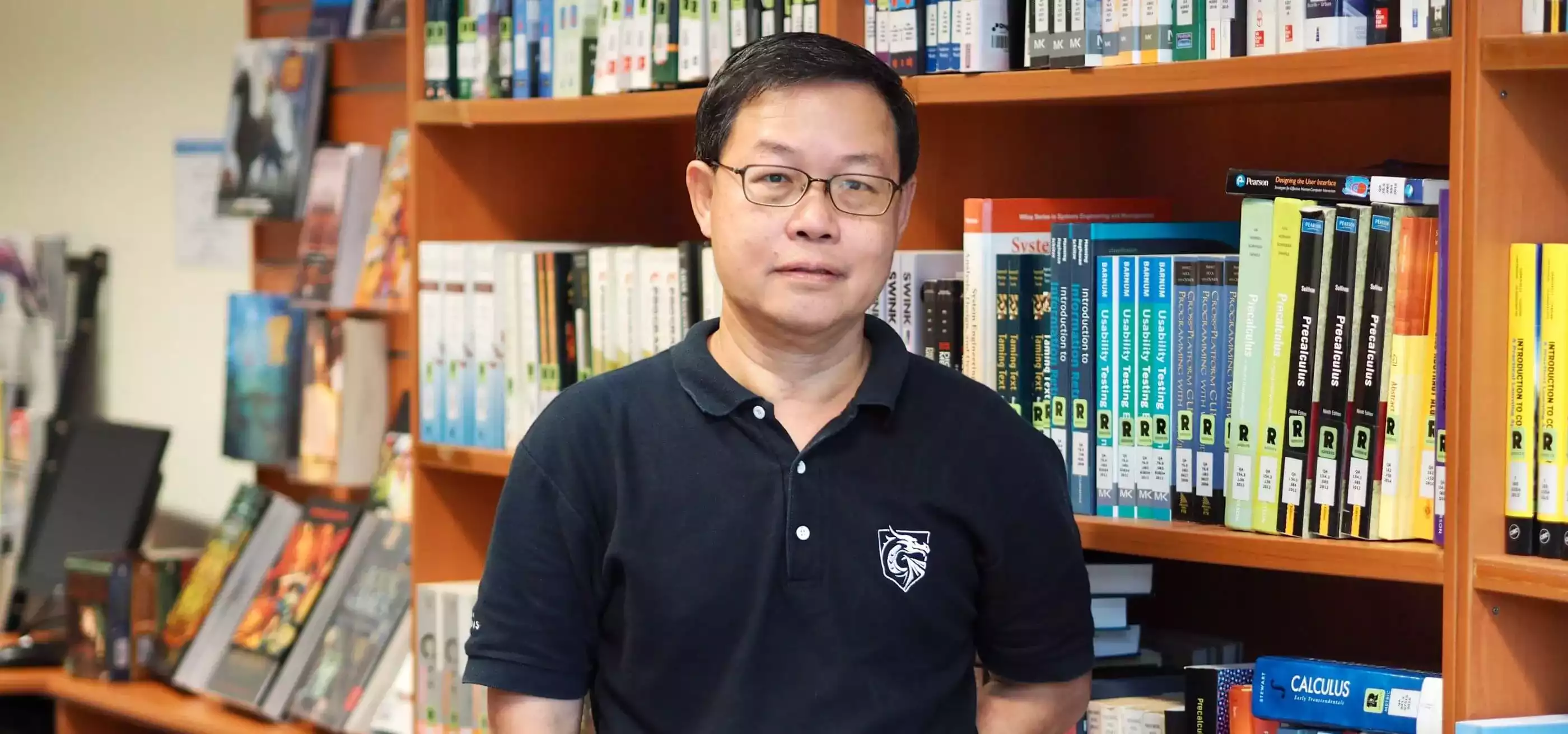In order to succeed in the field of systems engineering, one needs to possess both academic knowledge as well as hands-on technical know-how. This is a balancing act that Fong Foo Hoong, faculty chair of the Department of Electrical and Computer Engineering at DigiPen (Singapore), is familiar with. “Engineering is about solving real-world problems through design, and every design is unique,” he quips. “This can be challenging, but it is also what makes the field an exciting and rewarding one to be in.”
Foo Hoong’s interest in engineering goes way back. He recalls one of his favorite subjects in secondary school was “basic electricity.” Foo Hoong had a small group of friends with a similar interest, and they would spend their free time ploughing through the exercises in their textbooks as a way to challenge themselves. These study sessions further fueled Foo Hoong’s love for the field and led him to pursue engineering throughout his higher education, as he would go on to earn a bachelor’s and master’s degree in electrical engineering from the National University of Singapore.
Upon graduation, Foo Hoong secured a job at Hewlett-Packard (HP) and was largely involved in designing calculators, computers, and multifunction printers for the brand. As he gained more experience over the years, Foo Hoong rose through the ranks, eventually becoming a principal engineer and system architect for several models of HP’s Palmtop computers. In this role, he worked directly on the overall system architecture of the products. “This was particularly rewarding, as my interest has always been in the area of microprocessors,” he says.
In the course of his work, Foo Hoong also had the opportunity to work with engineers from all over the world, including Microsoft software engineers in Redmond, Nokia hardware engineers in Finland, and Hitachi IC design engineers in Japan. This exposed him to different working styles and allowed him to participate in global knowledge and technical exchanges to expand his skills and worldview.
After spending more than 20 years in various engineering teams and divisions within HP, Foo Hoong felt it was time for a change. He decided to move into teaching, as he wanted to share about his work and experiences with the next generation of prospective engineers to ignite their passion in the field. Foo Hoong kick-started his teaching stint as a full-time lecturer at Temasek Polytechnic in 2012, a position he thoroughly enjoyed. Five years later, a former colleague from HP reached out to him regarding an opening at DigiPen (Singapore). Upon the recommendation, Foo Hoong applied for the role and joined DigiPen (Singapore) in 2017, becoming department chair in 2022.
At DigiPen (Singapore), Foo Hoong teaches the second-year modules on embedded systems and circuit theories, as well as oversees the first-year project classes. He enjoys teaching a mix of hardware design and embedded software programming. “In an embedded system, both hardware and software have to coexist in order for the system to work,” he says. “As such, embedded systems engineers have to optimize their designs based on their understanding of the interactions between both disciplines. This requires an in-depth understanding of both theory and practice and can be challenging in more complex systems.” However, he adds, this challenge is also what makes the field an exciting one.
Foo Hoong hopes to impart a similar passion for engineering in his students. As an educator, he firmly believes in cultivating each student’s interest in whatever topic they are currently learning by making the topics relevant and relatable to everyday life. “This way, their interest in the subject will be self-driven and sustainable,” Foo Hoong explains, adding that this ultimately helps to create a better runway for lifelong learning.
